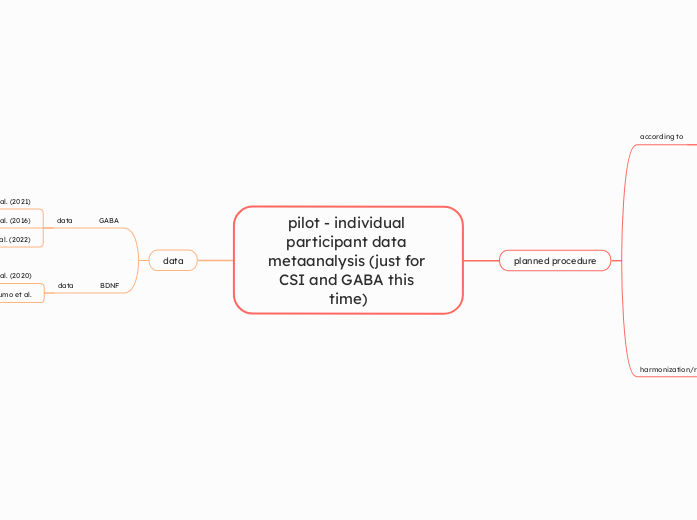pilot - individual participant data metaanalysis (just for CSI and GABA this time)
planned procedure
according to
Chen, D. G., & Peace, K. E. (2021). Applied Meta-analysis with R and Stata. Boca Raton, FL: CRC Press.
data summary (overall)
removing missing data (overall)
descriptives (by study)
meta-analysis with IPD
IPD analysis for each study
IPD analysis with pooled data
textbook: tested the treatment-study interaction
Subtopic
IPD with covariates (analogous to harmonization/residualization)
interactions of covariates and study (cov1*study, cov2*study, cov1*effect, cov2*effect, effect*study; summarily, all main effects and two-way interactions, no three-way interactions)
IPD with mixed-effect models (a type of multilevel modeling)
pooling all studies together
goal: estimate both between- and within- study effects
technical
fitting random-slope random-intercept model
random-intercept only model
model comparison (rsri/ri)
ICC (for any model)
what do we have to do in IPD?
pool correlations from all studies using harmonized (residualized) data
harmonize first where harmonization is needed
merge the data from all studies (with a study identificator)
pool between - study correlations (effect that we need)
pool within-study correlations (part of correlation that does not belong to the actual CSI-GABA relation)
using multilevel correlations as implemented in the psych package
harmonization/residualization
is excluding the effects of factors that may be relevant and may effect the results, but are not the scope of analysis (e.g., vendor, age, gender...)
can be done via
ComBAT harmonization
residualization using linear models
data
GABA
data
Peek et al. (2021)
Aguila et al. (2016)
Terumitsu et al. (2022)
BDNF
data
Pollli et al. (2020)
Caumo et al.
pilot results
control for
age
gender
group
control for
